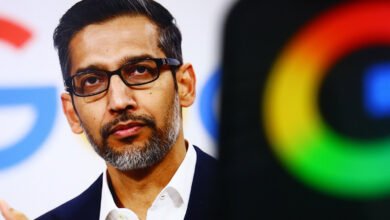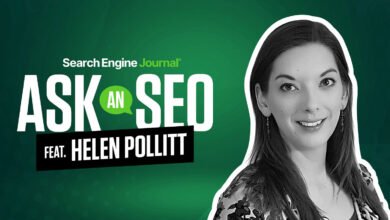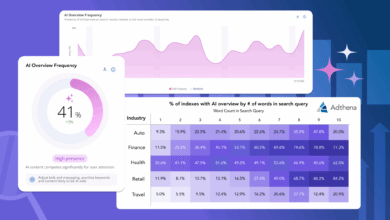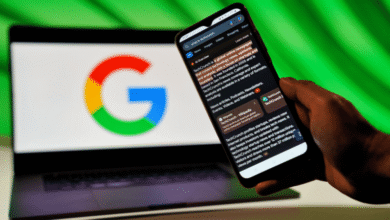Winning at PPC When Clicks Don’t Count
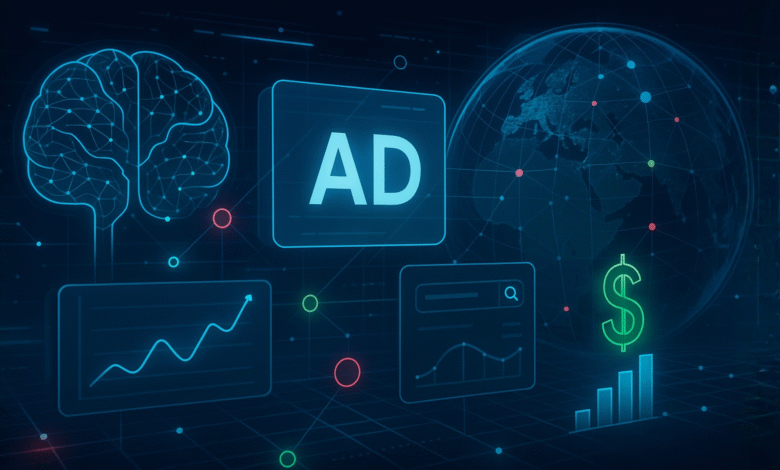
▼ Summary
– PPC advertising is becoming more challenging due to falling click-through rates, rising costs, and the impact of zero-click searches that satisfy user queries directly on search engine results pages.
– AI Overviews and other SERP features are reducing the number of available clicks by providing instant answers, which intensifies competition for commercial queries and drives up cost-per-click.
– Zero-click behavior suppresses ad click-through rates, lowers quality scores, and leads to CPC penalties, forcing advertisers to pay more for fewer clicks.
– The remaining clicks after AI Overviews are from highly motivated users with strong transactional intent, making them more valuable and shifting the focus to winning these high-intent clicks.
– Advertisers must adapt by using tightly themed ad groups, maximizing ad real estate, aligning with SEO strategies, and employing value-based bidding to prove relevance and authority in the evolving PPC landscape.
The landscape of pay-per-click advertising is undergoing a significant transformation, driven by the rise of zero-click searches and AI-powered results. Navigating this new reality requires a fundamental shift in strategy, moving beyond simply chasing clicks to capturing high-intent users who are ready to make a purchase. As search engines provide instant answers directly on the results page, the traditional click-through model is being reshaped, demanding more sophisticated and targeted advertising approaches.
For a long time, PPC advertising thrived in what could be called the “blue link economy.” Every click represented a potential customer journey starting on an advertiser’s website. Today, search engine results pages are filled with AI Overviews, featured snippets, and knowledge panels that deliver answers immediately. This is convenient for users but creates a major challenge for advertisers, leading to fewer clicks and increased costs.
When an AI Overview appears for a commercial query, it fundamentally changes the user’s mindset and the campaign’s objective. Previously, a user might have been in a research phase, looking for information. The campaign goal was to get that initial click to begin their journey on the site. Now, the AI provides the research, instantly moving the user into a buying mindset. The new campaign goal is to be the immediate next step to complete that purchase.
This zero-click behavior has a direct and negative impact on advertising costs. The available pool of clicks shrinks as user needs are satisfied directly on the search page. This overall reduction in clicks suppresses individual ad click-through rates, a key factor in determining your quality score. A lower quality score, in turn, leads to a cost-per-click penalty, forcing you to pay more to maintain your ad position. The result is a frustrating scenario where you pay more for less traffic.
However, this is not a reason to abandon paid search. The clicks that do remain are often far more valuable. After a user receives specific brand and product recommendations from an AI, any subsequent clicks come from highly motivated individuals. These are “super clicks” driven by serious transactional intent. The game is no longer about volume but about winning these high-value engagements.
To succeed in this environment, your strategy must adapt to prove relevance and authority, positioning your ad as the definitive next step.
First, create tightly themed ad groups and maximize your ad’s visibility. Since users are already informed, your ads must be hyper-specific. Grouping distinct keywords together dilutes relevance. Instead, focus on precise product matches to improve quality scores. Use every available ad asset, extensions, images, and links, to take up more real estate on the page. This increased visibility helps your ad stand out after a user scrolls past the AI answer. Furthermore, ensure a perfect message match between your ad and landing page. If you advertise a specific product, the landing page must feature that exact item, creating a seamless and trustworthy handoff for a ready-to-buy customer.
Second, think beyond a siloed PPC approach and embrace a converged marketing strategy. AI Overviews reward authoritative brands. Strong SEO content is not just for organic traffic; it builds the credibility that makes your paid ads more effective. Use your paid search data to guide your content strategy. Identify the search terms that drive your most profitable conversions and create content around those topics. If your brand can be cited organically in an AI Overview, it provides free visibility and establishes authority, making your subsequent paid ads appear more trustworthy.
Finally, reevaluate your bidding strategy. The old model of bidding for volume is no longer optimal. With AI filtering out low-intent traffic, you must shift your focus to value. Implement value-based bidding to ensure you are investing more in the high-intent clicks that are likely to convert. Your new objective is to be the most relevant and immediate transactional link for the specific products the AI has just recommended to the user.
The shift toward zero-click searches is a permanent feature of the digital landscape. This is not the end of paid search but a necessary restructuring. Your role evolves from simply outbidding competitors to demonstrating clear relevance, authority, and alignment across the entire search experience. The ad that wins is the one that feels like the best and most logical answer, not just the one with the highest bid. While these changes make campaign management more complex, they ultimately push PPC back to its core principles: understanding user intent and delivering clear, relevant value. Mastering these fundamentals will not only help you survive this evolution but emerge more resilient and effective.
(Source: Search Engine Land)

